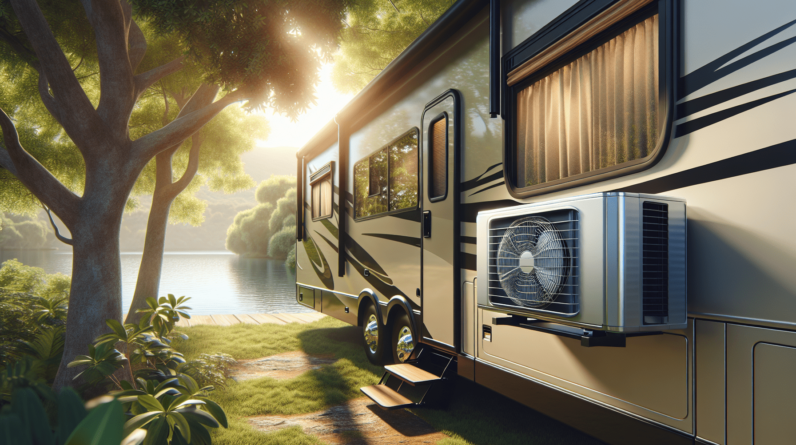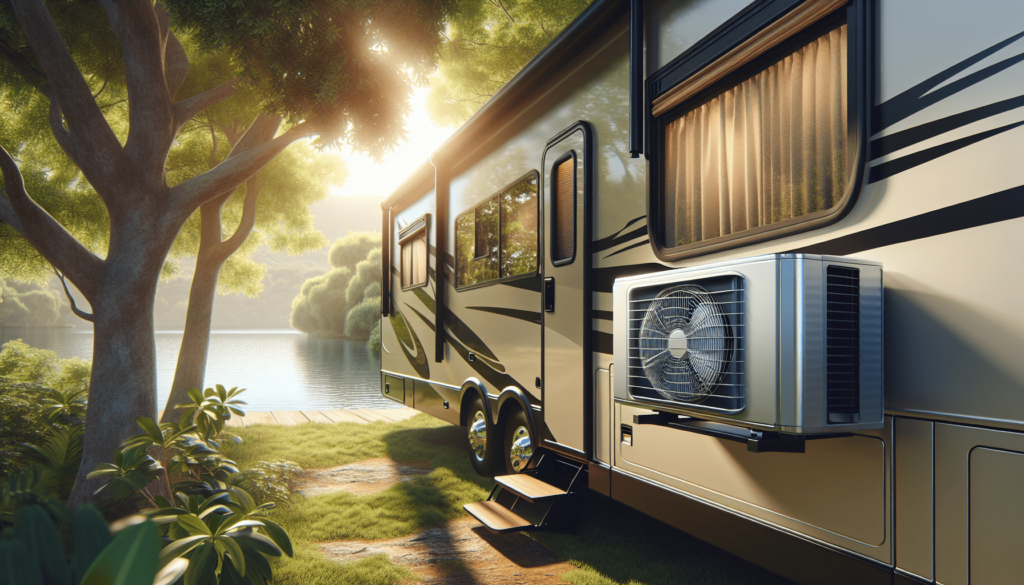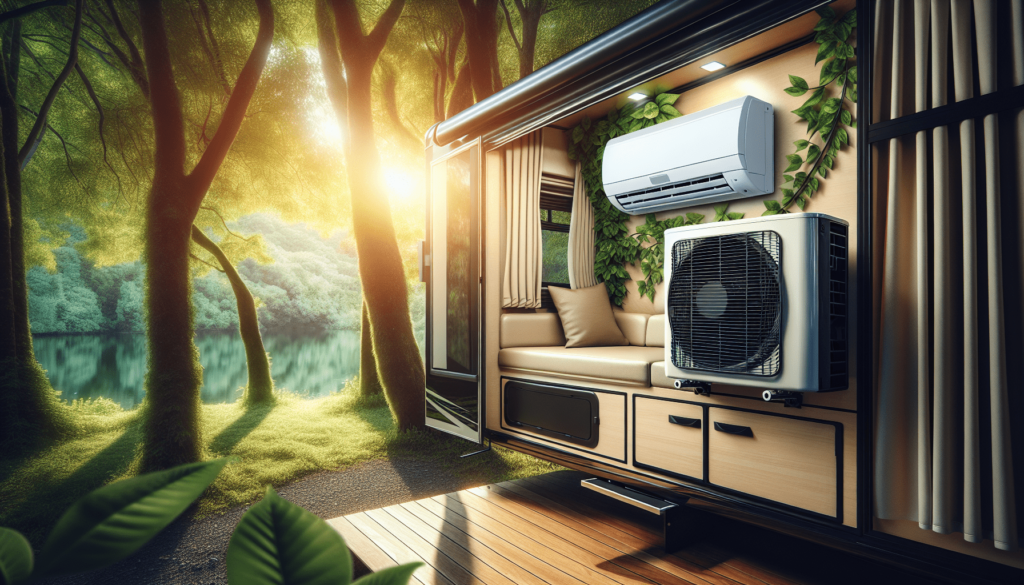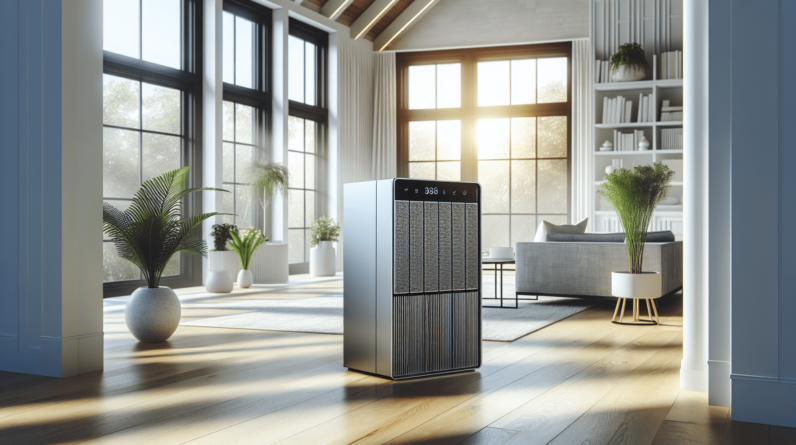

Have you ever found yourself sweating in your RV during a hot summer day? If so, you likely know how crucial having an air conditioner in your RV can be. Keeping your living space comfortable while traveling or camping is essential, and one of the most effective ways to achieve that is by investing in a reliable air conditioning system.

Understanding the Importance of Air Conditioning in an RV
When you’re on the road or enjoying the great outdoors, the last thing you want is to feel uncomfortable. Air conditioning can turn those hot, humid days into a pleasant, enjoyable experience. The significance of having proper cooling in your RV cannot be overstated, especially during peak summer months when temperatures soar.
Benefits of Air Conditioning in an RV
- Comfort: A well-functioning air conditioner provides immediate relief from heat, ensuring you can relax and enjoy your RV.
- Air Quality: Most air conditioners come with filters that can help remove dust, pollen, and allergens, improving the air quality inside your RV.
- Humidity Control: Air conditioning units help regulate humidity levels, making it more comfortable inside, particularly in muggy conditions.
Types of Air Conditioners for RVs
Before selecting an air conditioner, it’s essential to know the different types available on the market. Here are the most common RV air conditioning units:
Rooftop Air Conditioners
Rooftop units are the most prevalent choice for RVs. They are mounted on the roof and are often powerful enough to cool larger spaces effectively.
-
Pros:
- High cooling capacity
- They don’t take up interior space
- Generally quiet operation
-
Cons:
- Can be costly to install
- Installation maintenance may require a professional
Portable Air Conditioners
If you’re looking for flexibility, portable air conditioners might be your best bet. These units can be moved around as needed and do not require roof installation.
-
Pros:
- Easy to move and use
- Generally lower initial cost
- No roof modifications necessary
-
Cons:
- May not cool as effectively as rooftop units
- Takes up space inside the RV
Window Air Conditioners
Though less common in RVs due to space constraints, window-mounted air conditioners can still be an option if you have an appropriate window frame.
-
Pros:
- Cost-effective
- Fairly easy to install and remove
-
Cons:
- Requires a suitable window
- Not the most aesthetically pleasing option
Sizing Your Air Conditioner
Selecting the right size air conditioner is critical for achieving optimal cooling. An undersized unit won’t cool adequately, while an oversized one can lead to humidity issues.
BTUs: What You Need to Know
Air conditioners are rated in BTUs (British Thermal Units), which measure their cooling capacity. The higher the BTU rating, the more space the unit can effectively cool.
Calculating the Right BTU Rating
To determine the required BTU rating for your RV, consider the following:
- Size of Your RV: The larger your RV, the higher the BTU you’ll need.
- Climate: If you’re in extremely hot areas, you may require more cooling power.
- Number of Occupants: Each additional person can add about 600 BTUs.
- Sun Exposure: RVs parked in direct sunlight need more cooling power compared to shaded locations.
Here’s a general guideline for BTUs required based on RV size:
| RV Size (Square Feet) | Suggested BTU Rating |
|---|---|
| Up to 150 | 5,000 – 6,000 |
| 150 – 250 | 6,000 – 9,000 |
| 250 – 350 | 9,000 – 12,000 |
| Over 350 | 12,000+ |
Installation Considerations
Understanding the installation process can save you time and trouble. Different air conditioning types come with their own installation requirements.
Rooftop Installation Steps
- Remove Roof Covering: Remove any existing cover on the intended air conditioning slot.
- Seal Antenna and Fridge Vents: Ensure the areas around the installation site are sealed to prevent leaks.
- Lift the Unit into Place: Use a friend or a hoist to carefully place the air conditioner onto the roof.
- Secure It: Tighten the screws and secure the unit according to the manufacturer’s instructions.
- Connect the Wiring: Carefully connect the electrical components to power the unit.
Portable and Window AC Installation Steps
- Choose Location: Determine where in your RV you want to place the unit, ensuring power outlets are nearby.
- Set Up Drainage: Portable units will need a method to drain condensation. Make sure you have a plan in place.
- Plug In: Simply plug in the unit and follow any specific manufacturer’s instructions for setup.

Maintenance of Your RV Air Conditioner
A well-maintained air conditioner can last longer and perform better. Here are some essential maintenance tips:
Regular Cleaning
Keep your air conditioning filters clean. Dirty filters can impede airflow and reduce efficiency. It’s a good idea to check and clean them at least once a month.
Inspecting Seals and Ducts
Check the seals where the air conditioner meets the RV roof. Cracks and deteriorations can cause leaks and reduce efficiency. Inspect ducts for any debris or blockages.
Freon Levels
For rooftop units, ensuring that Freon levels are sufficient is vital. If your unit isn’t cooling effectively, it may be time to call a professional for an inspection.
Cost Considerations
When budgeting for an RV air conditioning system, it’s not just about the initial purchase price; it’s crucial to consider installation and maintenance costs as well.
Initial Costs
- Rooftop Units: Typically range from $800 to $1,500, including installation.
- Portable Units: Generally priced between $300 and $700.
- Window Units: These can be found for as low as $150, but they can vary in price based on cooling capacity.
Operating Costs
Operating costs include electricity and maintenance. Depending on how often you use the unit, expect to pay varying electrical bills. The average running cost can be estimated by checking the unit’s wattage and your local electricity rates.

Maintenance Costs
Annual maintenance may be beneficial for peak performance. This could range from $100 to $300, especially if you hire a professional.
Climate Adaptation and Usage Tips
While having an air conditioner is essential, knowing how to make the most of it enhances your experience. Here are some adaptive tips for various climates.
In Hot, Humid Conditions
- Close Windows and Shades: Keep all windows and shades closed to trap cold air inside.
- Use Fans: Ceiling fans can help circulate cool air more efficiently.
- Program Thermostats: If your unit has a programmable thermostat, set it to maintain a constant and comfortable level.
In Cooler Weather
- Avoid Overuse: If temperatures drop, you may not need the air conditioning running constantly.
- Consider Heating Options: Some units come with heating functionalities. Evaluate whether you need to switch on the heat instead.
Troubleshooting Common Air Conditioner Issues
Even the most reliable air conditioners can experience problems. Being aware of common issues can help you address them quickly.
Air Conditioner Won’t Turn On
- Check Power Source: Ensure it’s plugged in and there’s power to the outlet.
- Reset the Unit: Sometimes, simply resetting the system can restore operation.
Air Isn’t Cool Enough
- Dirty Filters: Clean or replace the filters regularly.
- Low Refrigerant Levels: If cooling is insufficient, it may indicate low Freon levels.
Strange Noises
- Loose Parts: Check for any loose screws or components within the unit.
- Debris: Ensure no objects are rattling around inside the unit.
Knowing When to Replace Your RV Air Conditioner
After years of reliable service, your air conditioning unit might require replacing. Here are some signs to look for:
- Frequent Repairs: If you find yourself calling for service regularly, it may be time for a new unit.
- Inconsistent Temperature Control: If your unit struggles to maintain a consistent temperature, it may not be worth the trouble to repair anymore.
- Age of the Unit: Many air conditioning units can last around 10-15 years. If yours is at the end of its life cycle, consider an upgrade.
Selecting the Right Air Conditioner for Your RV
Choosing the right air conditioner involves understanding your cooling needs, RV size, and climate. Take the time to evaluate units, compare features, and consider long-term costs.
Top Brands to Consider
While many brands offer air conditioning for RVs, a few stand out in terms of reliability and performance:
| Brand | Features | Price Range |
|---|---|---|
| Dometic | Quiet operation, efficient | $800 – $1,500 |
| Coleman-Mach | Multiple sizes available | $700 – $1,300 |
| Advent Air | Budget-friendly option | $400 – $700 |
| Atwood | Robust and durable | $1,000 – $1,400 |
Consider warranties and customer service records as part of your decision-making process.
Conclusion: Keeping Your RV Comfortable
Choosing an air conditioner for your RV is not just about cooling; it’s about enhancing your overall travel experience. With the right unit, you can enjoy comfortable journeys, whether you’re parked in a scenic location or just taking a break from the road. Focus on the essential factors like sizing, installation, maintenance, and understanding your unique needs to enjoy your time RVing fully.
Stay cool, enjoy your adventures, and ensure your RV is a cozy home away from home!






